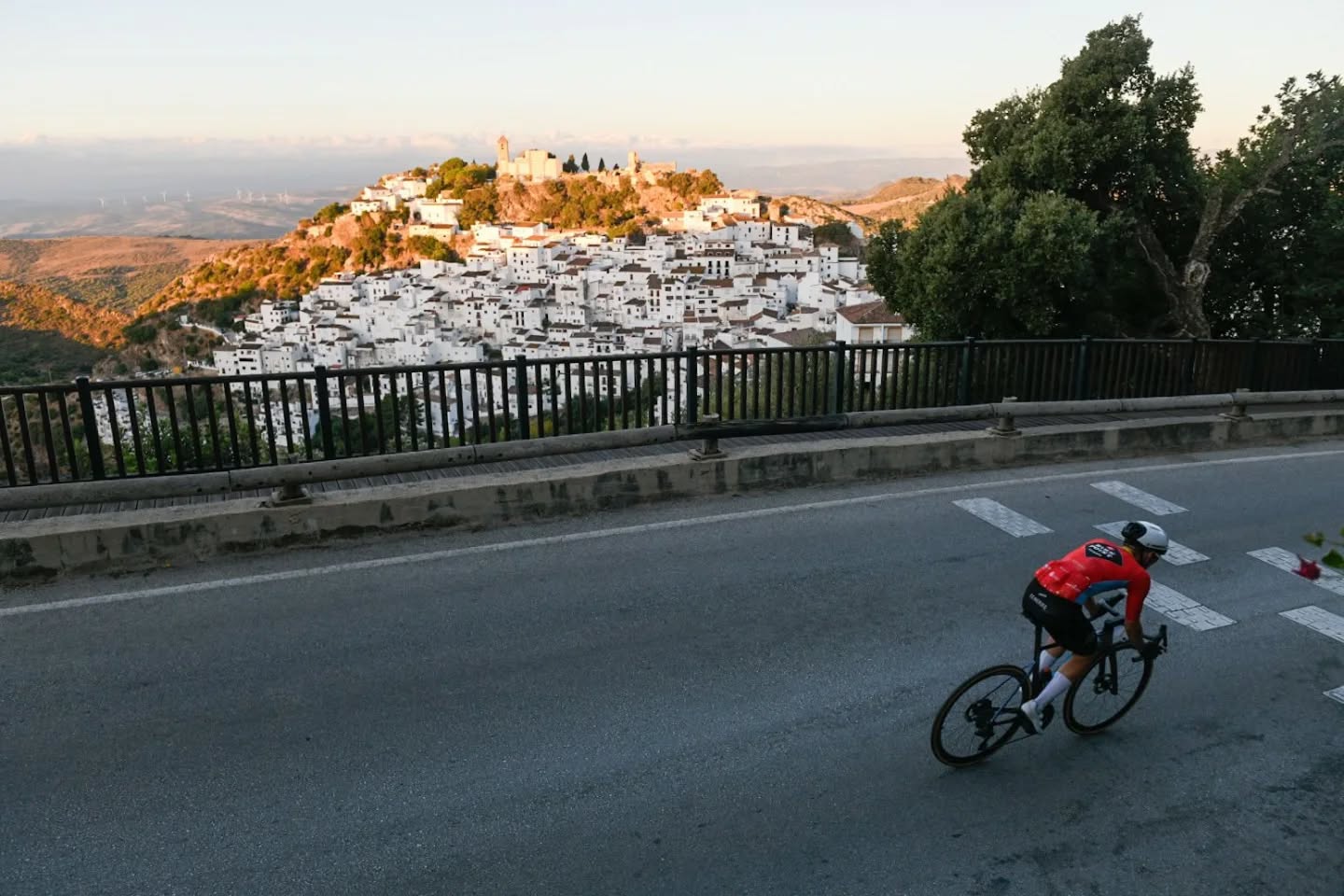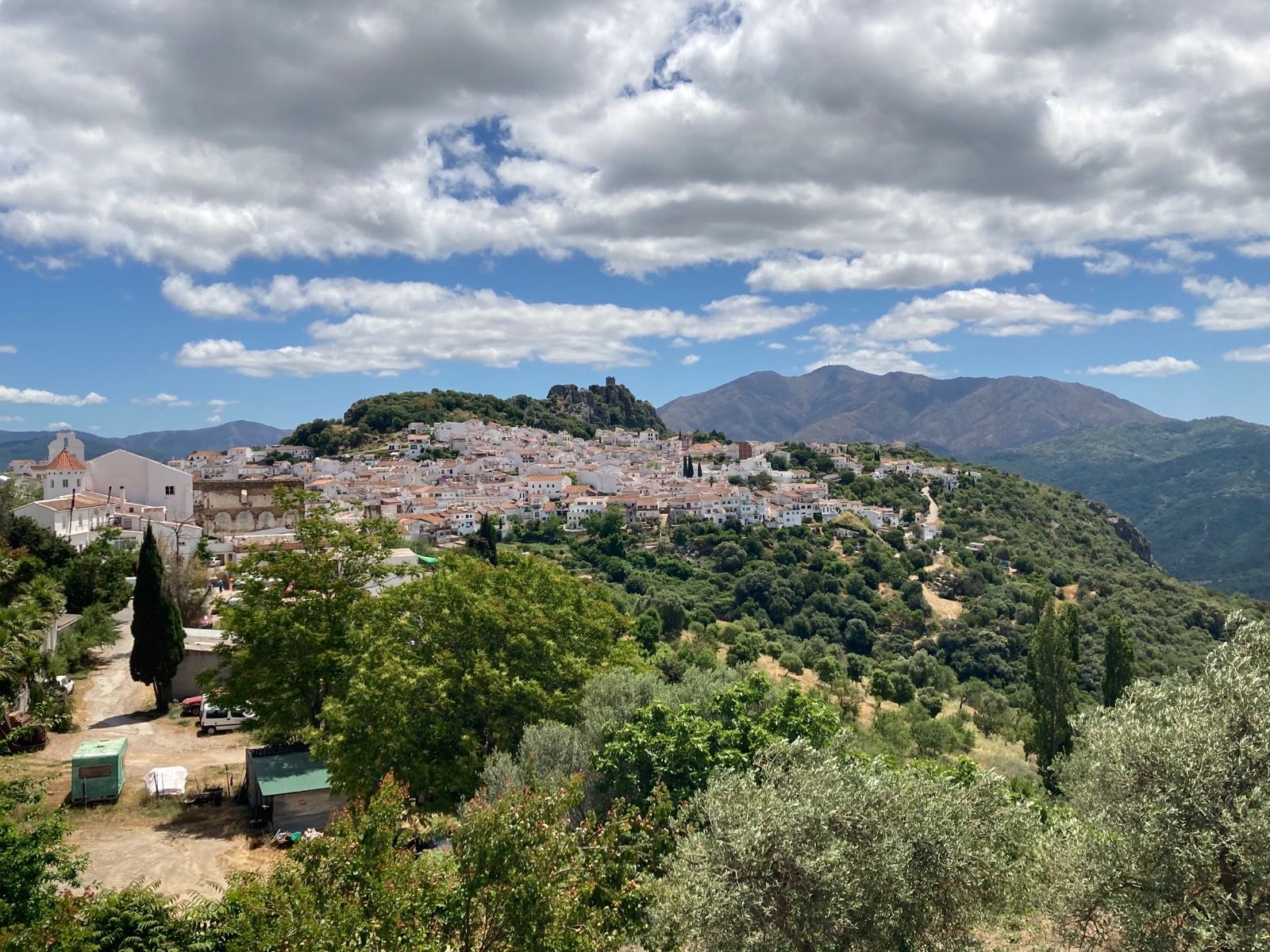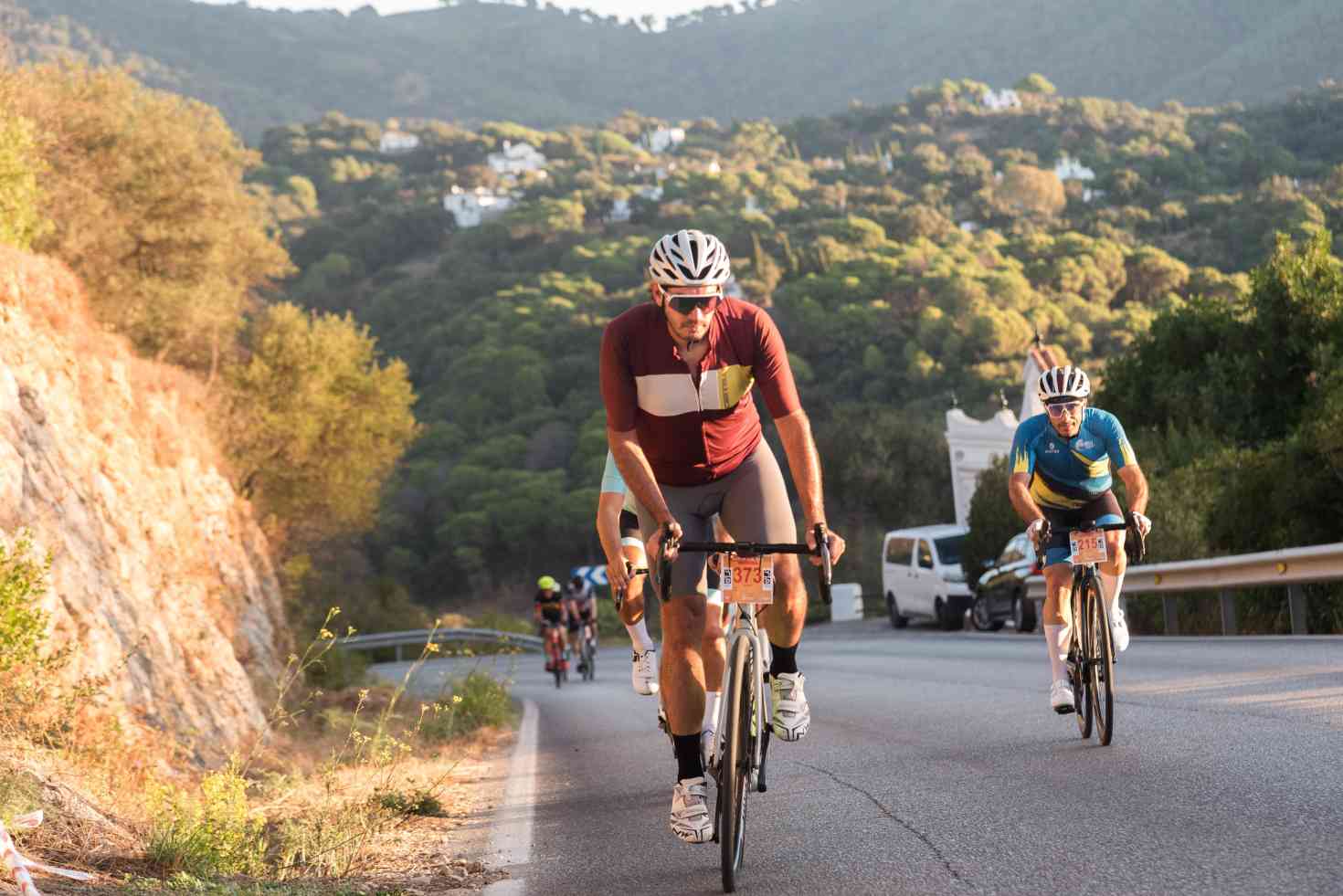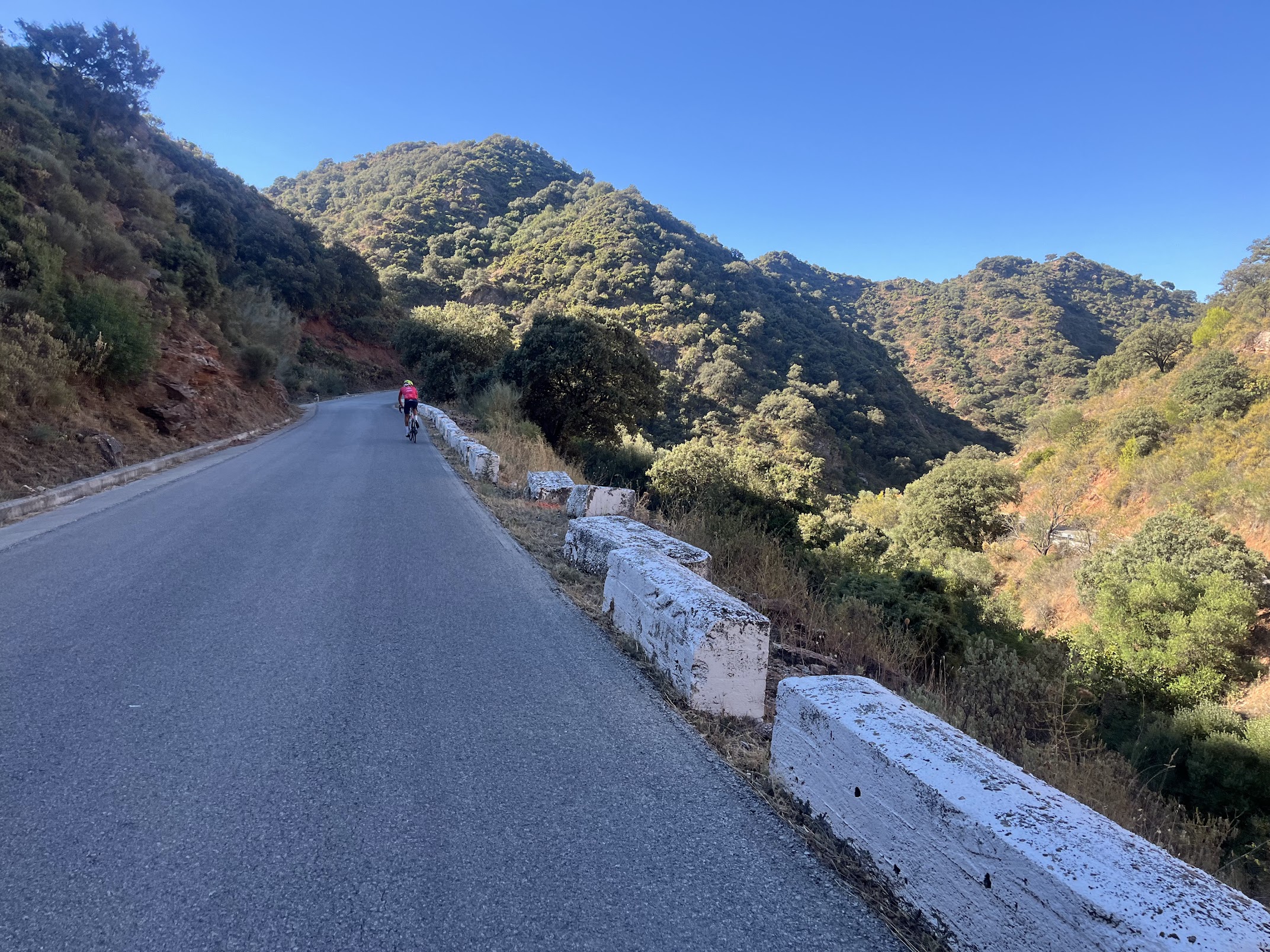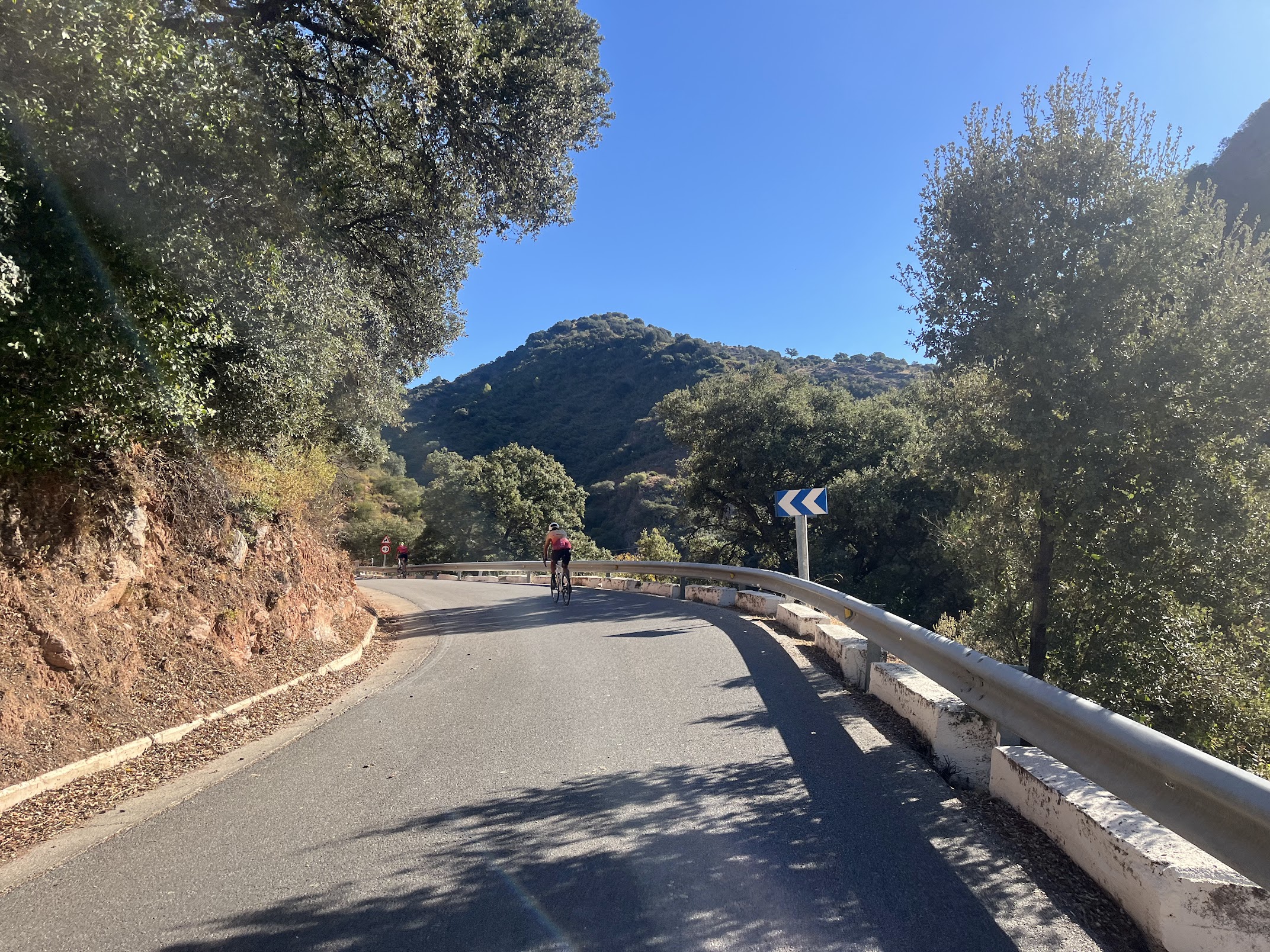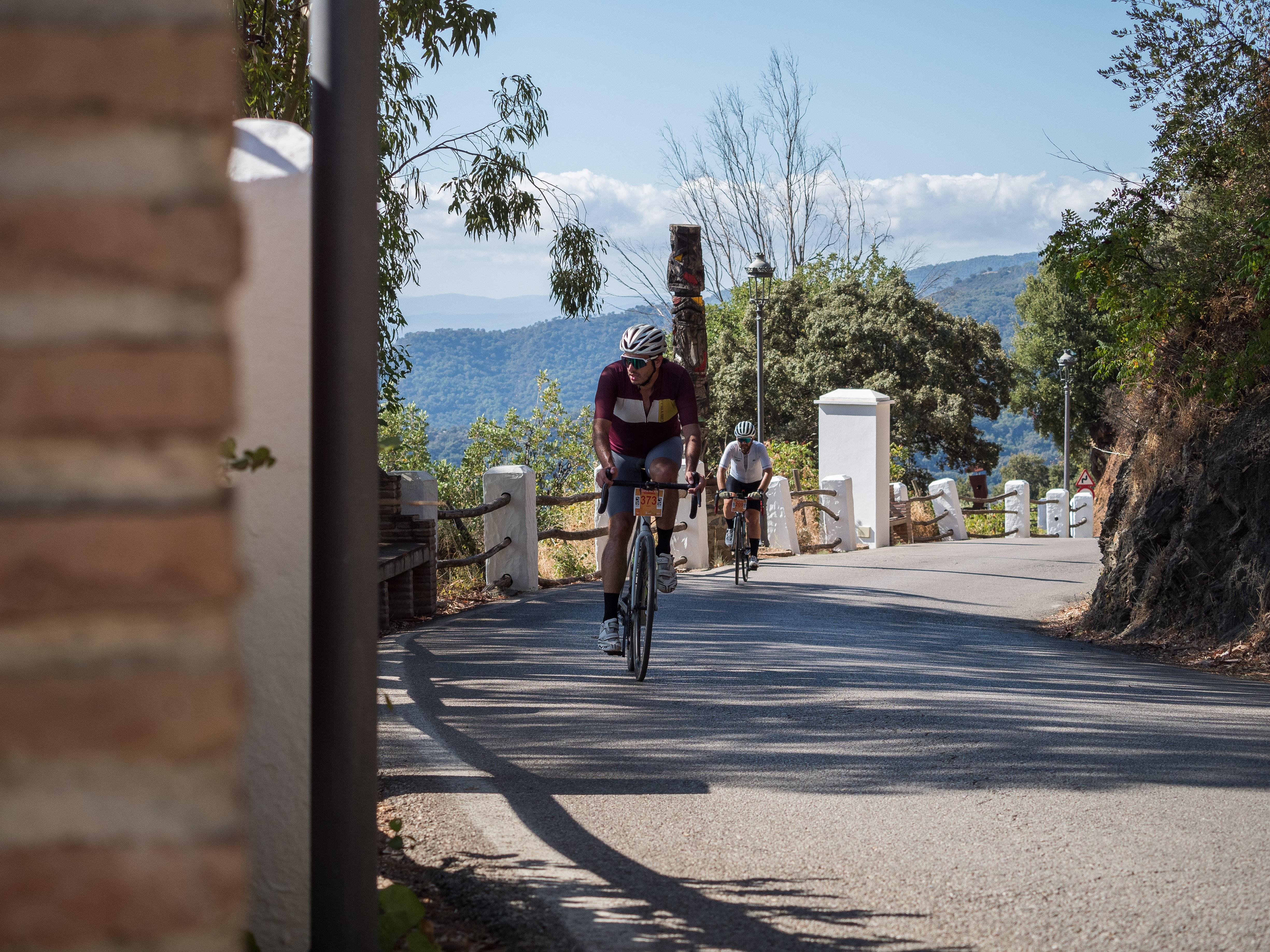Costa del Sol Gran Fondo
Starting and finishing in Estepona, the official Costa del Sol Gran Fondo route is a spectacular 130 km loop that takes you deep into the Sierra Bermeja mountains, through traditional Andalucían white villages, before returning to the Mediterranean coast. This is one of those routes where you get everything: mountains, culture, and coastal views. And at over 3400m of climbing, you’ll certainly feel it in your legs.
This route doesn’t feature any HC-style climbs like you’d find in the Alps or Pyrenees. Puerto de Peñas Blancas from the Estepona side is a difficult and long enough climb to be qualified as such, but from this direction it’s shorter and less intimidating on paper. So what makes this a true 5-star difficulty route? Simple: do enough riding uphill and any ride can be hard. This route exemplifies that perfectly. The 3,400m of elevation gain is spread across multiple climbs that never quite give you enough recovery time. You’re constantly either climbing, descending technical sections that demand your concentration, or grinding through undulating terrain that chips away at your energy reserves. It’s the cumulative effect that destroys you. By the time you hit that final climb to Puerto de Peñas Blancas with 100+ km already in your legs, even a moderate ascent feels brutal. This is a masterclass in how continuous climbing can make a route exceptionally hard without needing a single monster climb. Don’t underestimate it.
The ride begins with a long climb inland towards the dramatic landscapes of the Serranía de Ronda. The roads are narrow and winding, snaking through pine forests and past ancient cork oak trees. Make no mistake, this is not a ride for beginners—the relentless climbs and technical descents will test even experienced cyclists.
First highlight: Casares
The first major highlight is Casares, one of the prettiest villages in all of Spain. And that’s saying something, because Spain has no shortage of beautiful villages. Casares is perched dramatically on a hillside with its iconic cluster of whitewashed houses cascading down the slope. It’s the kind of place that makes you want to stop and take photos, even when your legs are screaming.
Second stop: Gaucín
After Casares, you’ll tackle 12 km of climbing towards Gaucín, another spectacular white village perched on a clifftop around kilometer 37. It’s a proper climb that’ll make you work for it, but the views are absolutely worth it. On clear days, you’re rewarded with panoramic vistas stretching all the way to Gibraltar and across the Strait to Morocco. This is where you’ll find the first aid station, so take a breather and refuel—there’s still a long way to go.
Next stop: Cortes de la Frontera
From Gaucín, the route continues deeper into the mountains towards Cortes de la Frontera. The terrain is beautiful but demanding, with gradients that never quite let you settle into an easy rhythm.
Just before you reach Jimera de Líbar, there’s another 10 km of climbing to contend with. At roughly the halfway point of the ride, your legs will definitely be feeling it by now. But the stunning mountain scenery keeps you going through this beautiful but tough section.
You’ll then pass through Algatocín and Genalguacil, two more picturesque white villages that seem frozen in time. These villages are the real Andalucía with whitewashed houses cascading down hillsides, quiet streets, and locals who wave as you ride past.
The final push: Puerto de Peñas Blancas
After Genalguacil comes the last climb of the day: Puerto de Peñas Blancas. This is a local classic and from this side, it’s shorter than the approach from Estepona—but that doesn’t mean it’s easier. The first 2 kilometers are really steep and will make you question your life choices, especially this late in the ride. But push through it, because the sweeping views back down to the Mediterranean are well worth the suffering.
Flying back to the coast
From the summit, it’s a thrilling descent back towards the coast. The route drops rapidly through pine forests with technical corners that require your full attention. After the descent, the final kilometers level out as you cruise back into Estepona.
If you ride this during the official event (held annually in October), there are well-stocked aid stations every 20-30 km with water, isotonic drinks, food, and even beer and paella at the finish. But honestly, this route is spectacular any time of year—just bring plenty of water and snacks if you’re riding it independently.
For more information about the official event, visit costadelsolgranfondo.com.
